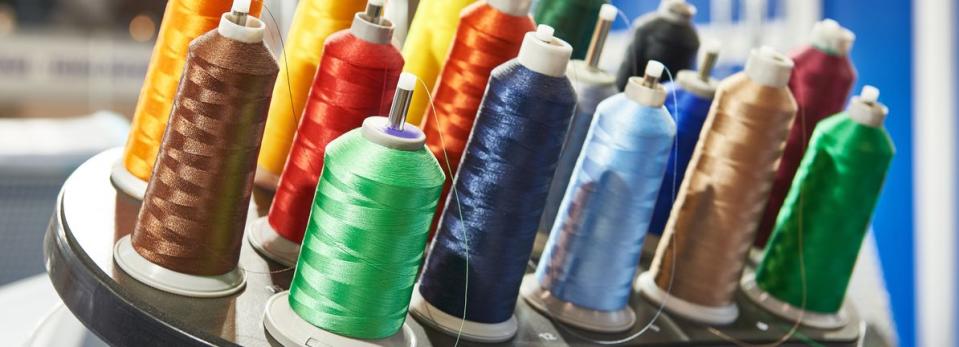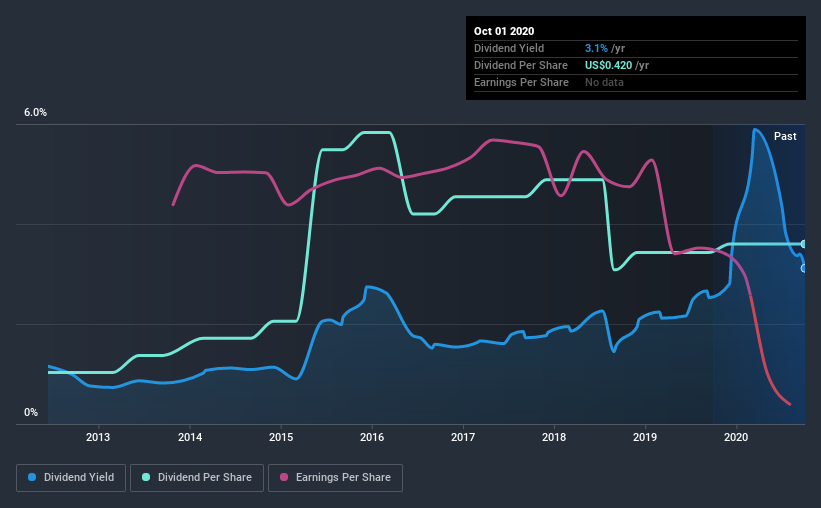Don't Buy Culp, Inc. (NYSE:CULP) For Its Next Dividend Without Doing These Checks

Culp, Inc. (NYSE:CULP) is about to trade ex-dividend in the next four days. You can purchase shares before the 7th of October in order to receive the dividend, which the company will pay on the 15th of October.
Culp's upcoming dividend is US$0.10 a share, following on from the last 12 months, when the company distributed a total of US$0.42 per share to shareholders. Based on the last year's worth of payments, Culp has a trailing yield of 3.1% on the current stock price of $13.48. Dividends are an important source of income to many shareholders, but the health of the business is crucial to maintaining those dividends. So we need to investigate whether Culp can afford its dividend, and if the dividend could grow.
See our latest analysis for Culp
Dividends are typically paid from company earnings. If a company pays more in dividends than it earned in profit, then the dividend could be unsustainable. Culp reported a loss after tax last year, which means it's paying a dividend despite being unprofitable. While this might be a one-off event, this is unlikely to be sustainable in the long term. Considering the lack of profitability, we also need to check if the company generated enough cash flow to cover the dividend payment. If Culp didn't generate enough cash to pay the dividend, then it must have either paid from cash in the bank or by borrowing money, neither of which is sustainable in the long term. Dividends consumed 55% of the company's free cash flow last year, which is within a normal range for most dividend-paying organisations.
Click here to see the company's payout ratio, plus analyst estimates of its future dividends.
Have Earnings And Dividends Been Growing?
When earnings decline, dividend companies become much harder to analyse and own safely. If earnings decline and the company is forced to cut its dividend, investors could watch the value of their investment go up in smoke. Culp reported a loss last year, and the general trend suggests its earnings have also been declining in recent years, making us wonder if the dividend is at risk.
The main way most investors will assess a company's dividend prospects is by checking the historical rate of dividend growth. In the past eight years, Culp has increased its dividend at approximately 17% a year on average.
Get our latest analysis on Culp's balance sheet health here.
The Bottom Line
From a dividend perspective, should investors buy or avoid Culp? First, it's not great to see the company paying a dividend despite being loss-making over the last year. On the plus side, the dividend was covered by free cash flow." It's not the most attractive proposition from a dividend perspective, and we'd probably give this one a miss for now.
So if you're still interested in Culp despite it's poor dividend qualities, you should be well informed on some of the risks facing this stock. For example, we've found 2 warning signs for Culp that we recommend you consider before investing in the business.
We wouldn't recommend just buying the first dividend stock you see, though. Here's a list of interesting dividend stocks with a greater than 2% yield and an upcoming dividend.
This article by Simply Wall St is general in nature. It does not constitute a recommendation to buy or sell any stock, and does not take account of your objectives, or your financial situation. We aim to bring you long-term focused analysis driven by fundamental data. Note that our analysis may not factor in the latest price-sensitive company announcements or qualitative material. Simply Wall St has no position in any stocks mentioned.
Have feedback on this article? Concerned about the content? Get in touch with us directly. Alternatively, email editorial-team@simplywallst.com.

 Yahoo Finance
Yahoo Finance 
